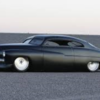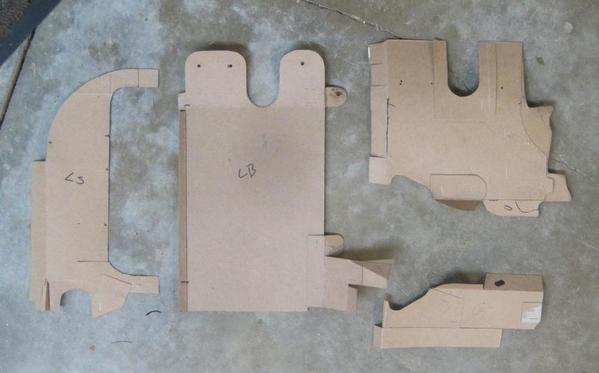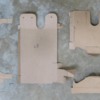So my car has sat, since Thanksgiving, never been re-started and with not a lot of work going on until last weekend when we had some really warm weather, so I tried starting it. It cranked a lot, but wouldn't catch, almost like there was no spark.
Nuts..... 
I peeked down the carb throats and, for sure...., the accelerator pumps are working so it's getting gas but won't start or run.
So I thought maybe I missed a wire when I was putting the engine back in and maybe there was no spark, but it's a real bear to pull a plug, put the plug wire on it and anchor it somewhere that you can see the spark plug tip when it fires.
Then I remembered a nifty little tool my Dad had for checking the spark on lawn mowers and small engines - a non-conducting Phenolic donut with a couple of pointy-end screws going into it, a big electrical clamp on one screw and a stud with a spark plug cap on the other and it was used to see if the points/coil were working.
So I made an "el Cheapo" version:

I can adjust the gap wider or narrower by turning the screw with the green lead attached in or out and it's pretty easy to see the spark happening in there and tell the strength by the spark color. The white tube is a piece of 1-1/2" PVC pipe I had kicking around and an old snowblower spark plug was sacrificed for the end cap. Works great, and quickly showed me that the coil was putting out LOTS of spark - all the way past a .060" gap!
Now, I've got a good spark, and fuel is squirting in, and I got it to start by pumping the heck out of it, but it won't stay running. Then I remembered that, (1.) it really sucks, getting old, and (2.) I made the idle jets a lot smaller when I did the rebuild, and maybe the mixture screws might be a little too lean? So I checked them all and they were 1-1/2 turns out, when the Thomlinson book says start at 3 turns each and go from there.
So today, at about 32º out, after turning one screw all the way in and then out 3 turns, with my bare fingers, I decided this really sucks, too, and went to Home Depot for a stubby screw-driver that I can cut down to just under 2" long so I will have something to turn AND know how far I've turned them. Yup, a dedicated Dellorto/Weber mixture screw screwdriver. I'll put some sort of a bump on one side of the plastic handle (once cut down) as a reference point to tell how far it's been turned when adjusting the screws.
You can tell there's not a hell of a lot to do here when it's snowing out, right?
I haven't had this much fun in the cold since trying to get a dead Artic Cat snowmobile going at -10º in Vermont. At 9pm. We ended up towing it behind another sled for 12 miles. 
I sure miss Beaufort:
Beaufort, SC
Friday 3:00 PM
Mostly Sunny

Temperature: 54ºF
Precipitation: 0%
Humidity: 24%
Wind: 14 mph






